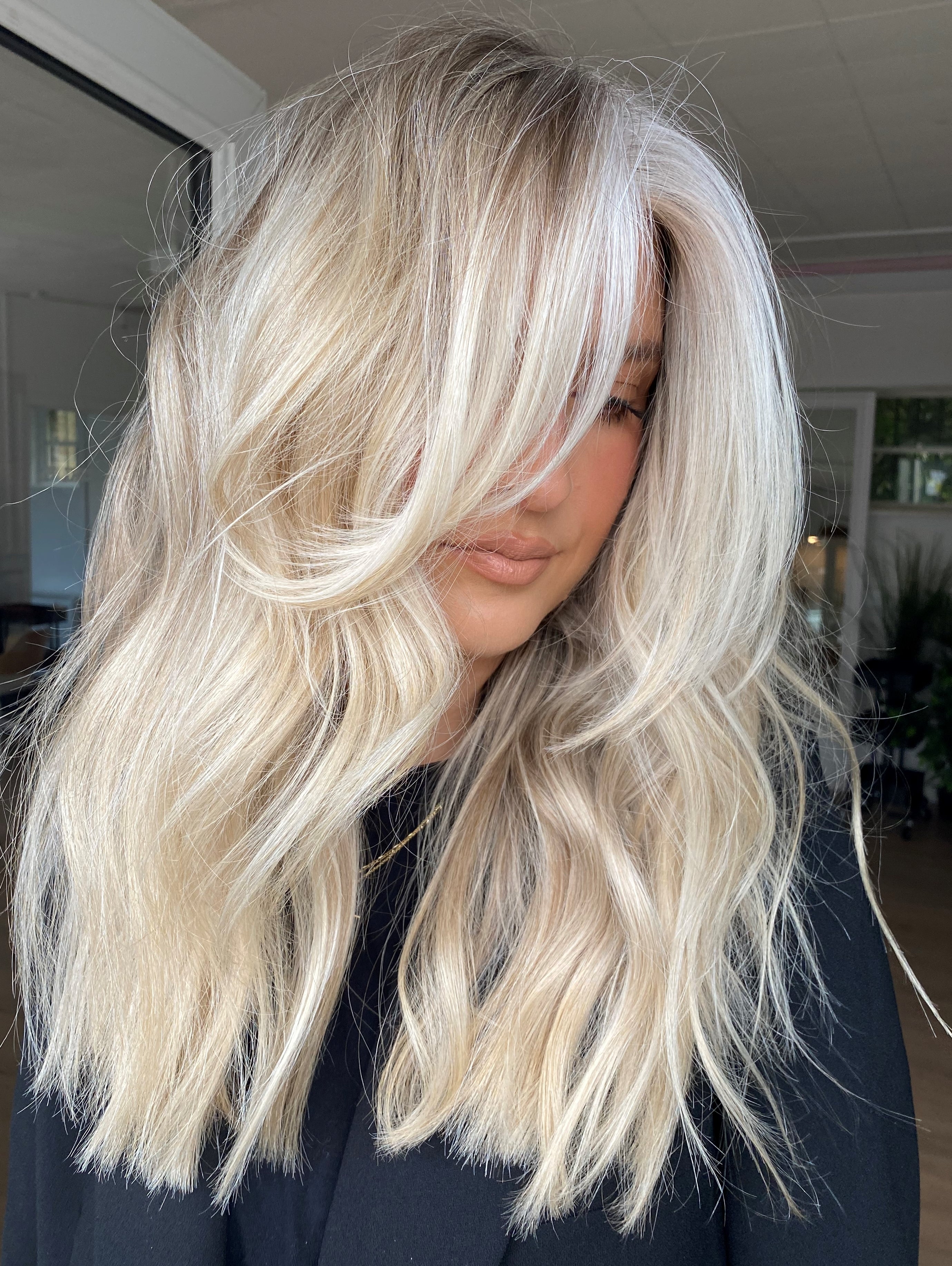If you have any other questions...
Feel free to contact us & we will be happy to help.
Naturigin is an organic based home hair colour which was created in Denmark. It is quickly becoming the only hair colour sold in pharmacies in Scandinavia and the #1 natural hair colour in each of those markets. Now it is on sale in Ireland by 100% Irish owned Simply Natural. It is gentler and more natural than the big brand home hair colours.
Many home hair colours have a lot of harmful chemical ingredients, some even purport to being natural while still including these ingredients.Naturigin is 100% Ammonia, Paraben and Resorcinol free, with minimal levels of PPD. In fact, these chemicals are not only removed but replaced by natural oils including lemon and mandarin oils. It is easy to use, the whole process taking approximately 30 mins and can cover grey as well as lighten and colour all hair types, unlike a lot of other natural hair colours.
Naturigin is available in pharmacies around the country now listed on our Stockist page. You can Contact Us to check out the closest stockist for you.
You can also buy Naturigin from our Online Shop. Check out our range of colours and we'll deliver them straight to your door.
Yes! Naturigin products as well as all other brands available at Simply Natural are cruelty free and are not tested on animals. Naturigin has many certifications such as Certified Organic Ingredients, which means that all ingredients have been certified as Organic by an independent third party.
Naturigin also proudly holds the The Vegan Society Trademark which indicates that no animal product, by-product, derivative or animal testing are used in any stage of product development.
This is the big question when colouring your own hair. Fortunately Naturigin has an easy to follow number system and in store aids to help you decide. Our 19 shade colour fan will allow you touch, feel and see the results when using Naturigin. Pharmacy staff are very knowledgeable and will help you in your choice.
For tips and expert advice when using Naturigin check the Hair Colouring at Home section or Contact Us in person.
Parabens are a class of chemicals widely used as preservatives in the cosmetic and pharmaceutical industries. Parabens are effective preservatives in many types of formulas. These compounds, and their salts, are used primarily for their bactericidal and fungicidal properties. These synthetic preservatives can be most commonly found in cosmetics and personal care products like shampoos, skin creams and most commonly hair dyes. Many people have allergic reactions to parabens causing skin rashes and irritation. Needless to say, there is a great ongoing debate as to the safety of products containing parabens.
Their efficacy as preservatives, in combination with their low cost, the long history of their use, and the inefficacy of natural alternatives probably explains why parabens are so commonplace. They are becoming increasingly controversial, however, because they have been found in extremely low concentrations in breast cancer tumours (an average of 20 nanograms/g of tissue). Parabens have also displayed the ability to weakly mimic estrogen (a hormone known to play a role in the development of breast cancer).
All of our products are Paraben Free!
Paraphenylenediamine (PPD) is a chemical substance that is widely used as a permanent hair dye. It may also been found in textile or fur dyes, dark coloured cosmetics, temporary tattoos, photographic developer and lithography plates, photocopying and printing inks, black rubber, oils, greases and petrol.
The use of PPD as a hair dye is popular because it is a permanent dye that gives a natural look. Hair can also be shampooed without becoming decoloured and perming to achieve waves or curls can be done without difficulty. PPD is a colourless substance that requires oxygen for it to become coloured. It is this intermediate, partially oxidised state that may cause allergy in sensitive individuals.Naturigin Organic Based Hair Colour has a very minimal PPD content (0.01%).
Reaction caused by the use of hair colour in mild cases usually only involves dermatitis to the upper eyelids or the rims of the ears. In more severe cases, there may be marked reddening and swelling of the scalp and the face. The eyelids may completely close and the allergic contact dermatitis reaction may become widespread.
Severe allergy to PPD can result in contact urticaria and rarely, anaphylaxis.People working with PPD such as hairdressers and film developers may develop dermatitis on their hands; patch testing usually reveals hypersensitivity to PPD. Occupational allergy to PPD has been found in a milk tester whom through laboratory work was in frequent contact with PPD solution. Dermatitis on the hands and occasional spreading to the arms and upper chest occurred.
One of the most dangerous applications of PPD is when it is added to henna, a natural dye. When used for temporary tattoos, henna laced with PPD is known as “Black Henna.” Although this is not an approved use for PPD in the United States, some tattoo artists will illegally add the chemical to henna for darker temporary tattoos that dry faster than pure henna tattoos. Because the dye is applied while the PPD is in its oxidation process, its potential as an allergen is increased. Black Henna tattoos often result in a skin reaction similar to a chemical burn, which in turn results in a scar where the skin was tattooed.
When added to henna, the concentration of PPD is often much higher than what is approved for use in hair dyes, resulting in a minor to major allergic reaction. Once a person who has been exposed to PPD has an allergic reaction, they may suffer a lifelong sensitivity to the chemical.
Naturigin use the cleanest energy sources in the process of combining the best ingredients from nature with high-performance and exclusive quality in all our products. It is important for us to take care of nature, which is why our packaging is based on recycled plastic retrieved from the ocean.
Naturigin spray products such as the Dry Shampoo are predominantly made with Bio DME, a propellant gas that is made from 100% renewable biomass waste. Bio DME is a highly biodegradable, non-corrosive & non-toxic gas.
Yes. Mixing colours means that you can produce a more unique colour. It also allows you to add more depth to your colour.
It is important to pick two shades that compliment each other well.
Black Shades and Blonde Shades should be avoided as they are both very dominant colours & do not mix well together.
Red Shades and Brown Shades go perfect together to create a nice auburn colour, but be careful on how much red you use if you want to avoid your hair looking too red.
When mixing two Blonde Shades of colours at two different levels, remember that the higher level colour will lighten, while the lower level colour will add depth which helps in avoiding blonde hair looking brassy.!
How to Mix Colours:
When mixing hair color shades, pour them in a clean bowl and make sure they are mixed thoroughly before applying to the hair. You can then either put the mixed colour to the Activator bottle or apply the hair colour directly from the bowl with a tint brush. For best result, do not wash your hair for 24 hours after colouring.
The highlights will react differently from the rest of the hair, depending on the colour of your highlights. If the highlights are high-lift colour,thye may not take the colour in the same way the the non-highlighted hair will. If the highlights are bleached, they will probably absorb even more colour.
Yes, choose a high lift colour (10.0, 10.2, 10.3, 11.0, 11.2) & apply with your preferred highlight technique.
If you want to stay away from warm/copper tones choose an ashy colour (.1 or .2 shades). Anything in the range from level 3 to 6 are dominated by underlying red pigments, so it will have a warm definition. Naturigin are working on developing a cold brown, so keep an eye out for this in the near futur
Although NATURIGIN is based on 98 % organically derived ingredients, it still contains a few ingredients that can be related to hair dye allergy to maintain a permanent hair colour quality. No matter what product you are about to use it is always a good idea to perform the test 24 to 48 hours before to prevent potential adverse effects.
How to do a patch test:
1.Use cotton swabs to dab a small amount of the product onto your skin in an innocuous place, for example behind your ear or at the nape of your neck.
2.Remember to do this with both the colour cream and activator, however, you do not have to mix the two just yet.
3.Wait 24 to 48 hours and check for a reaction to the two components.
4.If you see an irritation on the skin you should refrain from colouring your hair further.
5.If your skin has not reacted to the patch test you are all set to continue your hair colouring adventure and should not experience any allergic reactions.
If your hair is in good condition, you can colour within a few days.
Henna hair colours coats the hair on the outside only, glossing over the cuticles. This means that the Henna works as a shield on your hair, meaning that other hair colours can't access the hair. Because of this we do not recommend to colour your hair if it is already coloured with Henna. This can be a very unpredictable process & can cause an unwanted outcome, or no change at all. You cannot lift Henna, so be careful!
Naturigin Colours without being opened can keep for a very long time, however, once opened you are not really meant to keep it and use it again - but if you do not mix it you can use it within a month of originally opening but be sure to SEAL both the colour & the activator tightly.







